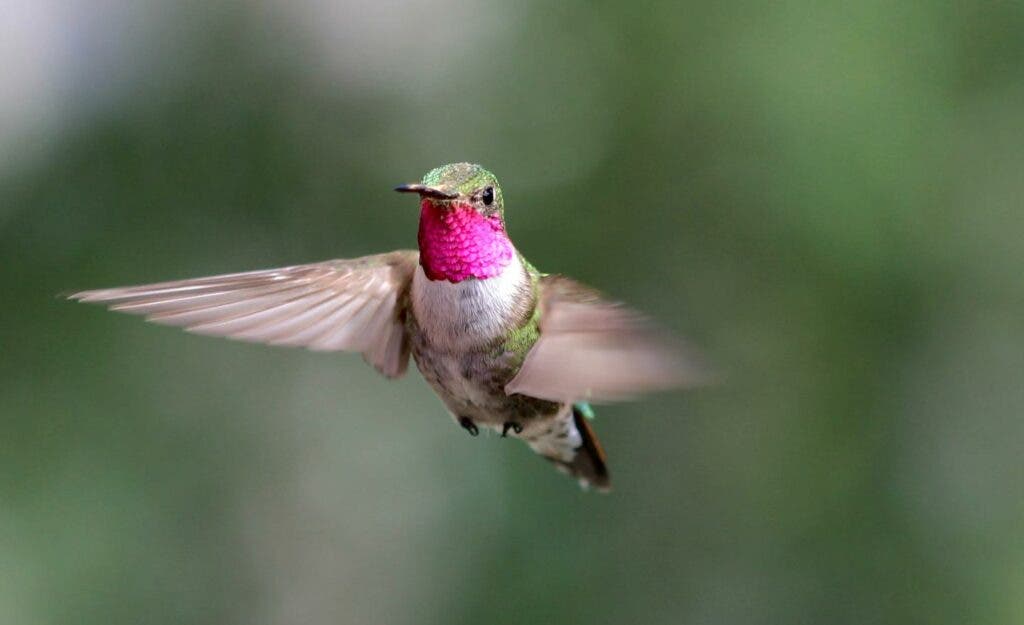Science
Related: About this forumHummingbird eyes can detect UV, allowing them to see the world in colors that humans can't even imag
A fourth color cone type in the hummingbird's eyes allows the birds to see in extra colors tinted in ultraviolet.
by Tibi Puiu June 15, 2020

The male broad-tailed hummingbird can see combinations of colors like ultraviolet plus green or ultraviolet plus red. In fact, the bird’s throat, which looks like magenta to us, is likely perceived as ultraviolet plus purple by birds.
Compared to many birds, such as the delightful hummingbird (Colibri), humans are color-blind, says Mary Caswell Stoddard. The Princeton University professor, along with colleagues, showed that hummingbirds are able to discriminate various ultraviolet (UV) color combinations, allowing the birds to see the world in additional colors that humans can’t even comprehend.
A hidden world of ultraviolet
Humans essentially see the world in a combination of three colors: red, green, and blue. Each primary color is detected and decoded by corresponding specialized cones in the eye.
The hummingbird, however, has a fourth color cone, which extends its color-vision range into the ultraviolet. But, how exactly does this additional color cone morph the bird’s vision?
In their new study, Stoddard and colleagues left their labs at Stanford and traveled to Gothic, Colorado, for fieldwork in the alpine meadows each summer over the course of three years.
More:
https://www.zmescience.com/science/hummingbird-see-non-spectral-colors-05235/
at140
(6,110 posts)who feeds regularly in my backyard feeder...almost exact coloring.
Cicada
(4,533 posts)Her vision matches that of the four cone humming bird. https://futurism.com/uk-woman-extra-cone-cell-her-eyes-can-see-more-colors
Clash City Rocker
(3,396 posts)This is a mantis shrimp.

Some mantis shrimps have as many as sixteen color cones. They can see far into the infrared and the ultraviolet. Some of them also have a claw that can punch through crab shells. They are pretty badass animals.
Bayard
(22,071 posts)We have not seen a single one this year. Not on the feeders (finally just stopped filling them), or in the garden.
Really weird.
mopinko
(70,103 posts)used to breed budgies. you put a uv light on them when you want them to mate.
hunter
(38,311 posts)Our burrowing mammal ancestors had only two color receptors, one for violet/blue, one for green/yellow.
In our primate ancestors there was a duplication of the genes for green/yellow receptors and then a mutation that shifted the sensitivity of one duplicate slightly to the red side of the spectrum. This minor improvement in color perception was a useful trait for animals that lived in trees and ate fruit.
You can see this split in this normalised responsivity spectra of human cone cells:

Birds have four color receptors, evenly spaced on the spectrum, and their brains are highly adapted to process this information. Their color perception is unimaginably superior to ours -- much greater than the difference we see between a black and white television picture and a color television picture.

When a parrot looks at a color television picture it looks nothing like the real world to them. Most colors are missing and other colors are just wrong.
https://en.wikipedia.org/wiki/Tetrachromacy